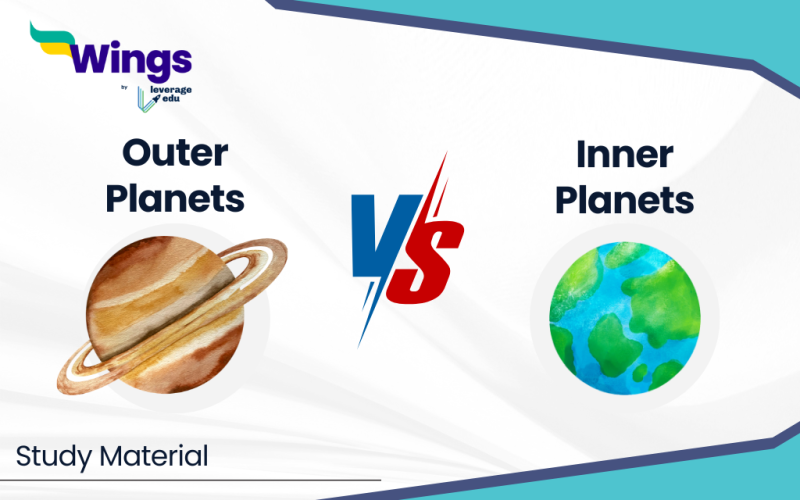The main difference between the inner and outer planets lies in their composition, size, and orbital characteristics. As you know there are a total of 8 planets in the solar system. Out of these 8, four are outer planets and the remaining four are inner planets.
To completely understand our solar system, we need to understand the major difference between Inner and Outer planets. Here in this blog, we have discussed all the major differences between the Inner and Outer planets. Keep reading for more.
Table of Contents [show]
What are Inner Planets?
The inner planets are known as terrestrial planets, which are the four planets closest to the Sun. These planets are Mercury, Venus, Earth, and Mars. These planets are made of composed of silicate rocks and metals.
Inner planets are relatively small compared to their outer counterparts. Inner planets have shorter orbital periods
What are Outer Planets?
The outer planets, also known as the gas giants, are the four planets farthest from the Sun. These planets are Jupiter, Saturn, Uranus, and Neptune.
The main components of these planets are hydrogen and helium. The deep atmosphere of these planets transits into liquid and then finally converts into metallic hydrogen.
What is the Difference Between the Inner and Outer Planets?
Many factors can differentiate between the Inner and Outer planets. Here is the tabular representation to understand the main difference:Here we have listed the main differences between the inner and outer planets:
| Factors | Inner Planets | Outer Planets |
| Composition | Composed of solid, rocky materials such as silicate rocks and metals | Composed of hydrogen and helium, with rocky cores |
| Size | Relatively small | Much larger |
| Density | Higher density | Lower average density |
| Surface | Solid surfaces | No solid surface, just thick atmospheres |
| Examples | Mercury, Venus, Earth, Mars | Jupiter, Saturn, Uranus, Neptune |
| Orbits | Shorter orbital periods | Longer orbital periods |
| Orbit Structure | Orbits are generally more circular | Orbits are more eccentric, elongated and tilted |
Also Read: What is the Difference Between Device and Machine? Complete Details
Similarities Between Inner and Outer Planets
There are just a few general similarities. Overall, the differences between inner and outer planets are much more significant.Here are the similarities between inner and outer planets:
- Both inner (Mercury, Venus, Earth, Mars) and outer planets (Jupiter, Saturn, Uranus, Neptune) are members of our solar system, orbiting the sun.
- All planets, inner and outer, have a roughly spherical shape due to gravity pulling their mass inwards.
- While not all planets have them, both inner and outer planets can have moons orbiting them.
FAQs
According to the reports, the density of inner planets is higher in comparison to outer planets.
There are 4 outer planets in the solar system. The outer planets have longer orbits, faster spins, a composition of gases and liquids, numerous moons, and rings.
As for outer planets, there are 4 inner planets in the system. They have shorter orbits, slower spin, no rings, and they are made of rock and metal.
RELATED BLOGS
This was all about the “Difference Between Inner and Outer Planets”. For more such informative blogs, check out our Study Material Section, you can learn more about us by visiting our Indian exams page.
 One app for all your study abroad needs
One app for all your study abroad needs















 45,000+ students trusted us with their dreams. Take the first step today!
45,000+ students trusted us with their dreams. Take the first step today!
